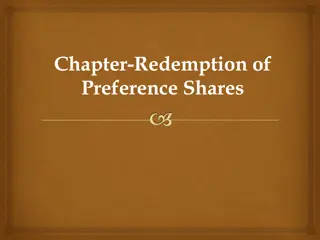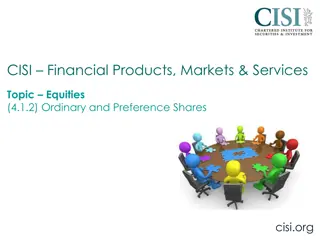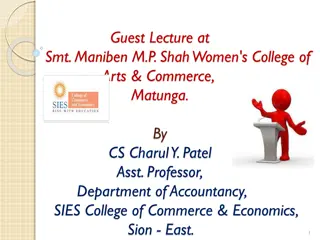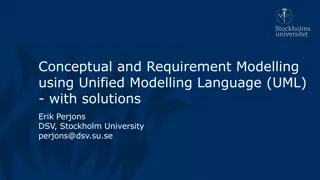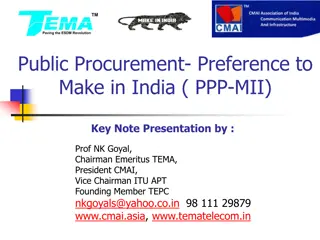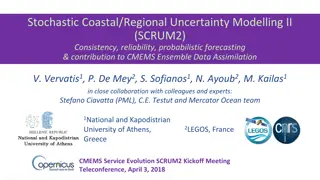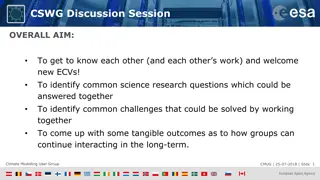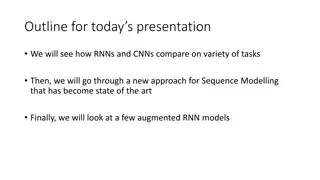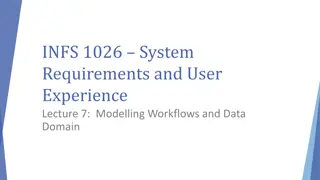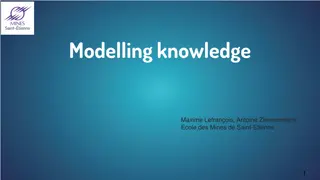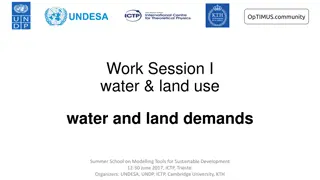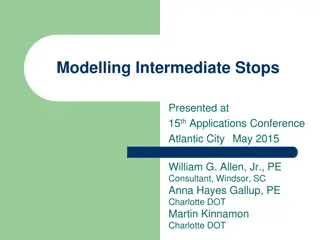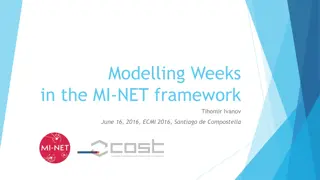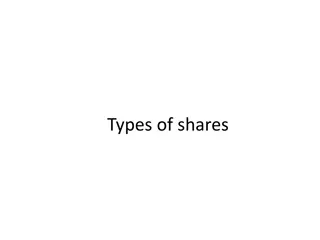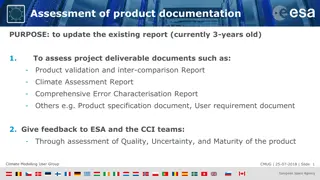
Enhancing User Experience Through Personalization in Electronic Content
Explore the concept of personalization in electronic content, where information is tailored to individual users to enhance their experience. Discover examples and benefits of personalization in both business and information filtering contexts.
Download Presentation

Please find below an Image/Link to download the presentation.
The content on the website is provided AS IS for your information and personal use only. It may not be sold, licensed, or shared on other websites without obtaining consent from the author. If you encounter any issues during the download, it is possible that the publisher has removed the file from their server.
You are allowed to download the files provided on this website for personal or commercial use, subject to the condition that they are used lawfully. All files are the property of their respective owners.
The content on the website is provided AS IS for your information and personal use only. It may not be sold, licensed, or shared on other websites without obtaining consent from the author.
E N D
Presentation Transcript
The ability to customise each individual user s experience of electronic content . In personalisation, information about a user is applied in order to design products and services better by tailoring them to the user . 1389 19 -
Amazon.com Online shopping from the earth's biggest selection of books, magazines, music, DVDs, videos, electronics, computers, software, apparel & accessories, shoes, ... ... 1389 19 -
1389 19 -
1389 19 -
1389 19 -
1389 19 -
1389 19 -
1389 19 -
1389 19 -
1) In the context of information filtering to select useful and relevant information in a large body of information. Example: Receiving special television programs by a viewer 1389 19 -
2) In the business context of supporting one-to-one marketing, both in conventional and electronic commerce, where marketing is tailored to a group of individual customers among the entire population of customers. offering promotional deals to a group of customers. Examples: waiter/waitress, Sending promotional materials or 1389 19 -
Interface configured by computer Content configured by computer Implicit Who personalises? Interface configured by users User-configured content customisation Explicit Interface Content What is personalised? A framework for personalised information systems 1389 19 -
In some studies such, the distinction between implicit and explicit personalisation is considered as the difference between personalisation and customisation respectively. who performs the personalisation? The system The user Customisation is done manually by the user and the system is almost passive. Example: My yahoo In personalisation the system automatically personalises a service or product based on the history of previous interactions with the user. Example: recommendations in Amazon -> Personalisation -> Customisation 1389 19 -
1389 19 -
1389 19 -
Different approaches to web personalisation Content personalisation Cognitive filtering (content-based) Collaborative filtering (social systems) Control personalisation Link personalisation Example: favourites in internet explorer (explicit link personalisation) Customised screen design personalisation Example: My yahoo Anthropomorphic personalisation (acts like a human) 1389 19 -
In web filtering applications: A representation of a web page A representation of the user s interests A function to determine the pertinence of a web page given a user s interests A function returning an updated user profile given the user s feedback on a page 1389 19 -
Personalisation challenges can be classified into two main categories: User and context modelling Adaptation Adapting the content/interface to the user and context model Adapting the user and/or context model to user s feedback 1389 19 -
Interface Content Product Personalised content/interface/product Adaptation Explicit Feedback Other Profiles User and Context Modelling Implicit Feedback Terminal Profile User User Profile User s Context Information 1389 19 -
The user profile may consist of many pieces of information such as User static data (name, DoB, ...) user needs preferences history behaviour location-related aspects technical specifications ambient conditions or even business rules that apply. 1389 19 -
Learning : Adapting user model to new observations. Sometimes the environment in which observations are made is deterministic and also it is possible to observe enough facts to reach an optimum solution for the problem. However, in many real world problems, prevalence of uncertainty affects the learning and reasoning procedure and demands different types of learning and reasoning algorithms. User modelling ->uncertain domain ? 1389 19 -
Probability theories and statistical learning methods are applied for learning from observations under uncertainty. The main statistical learning methods applied to user modelling: Neural networks Classification Rule induction Bayesian networks Able to predict more than one variable Represents causal relationships The only approach in which persistence of interests is not an assumption 1389 19 -
Regardless of the modelling technique applied for machine learning, there are some challenges specifically associated with machine learning for user modelling, some of these challenges are: The need for large data sets The need for labelled data Concept drift (dynamicity of user interests) Computational complexity (millions of visitors in web personalisation) 1389 19 -
Web personalisation E-commerce Mobile services < <- - Personalisation in physical space 1389 19 -
W3C Virtual Home Environment WWRF I-centric vision 1389 19 -
The World Wide Web Consortium (W3C) is an international community that develops standards to ensure the long-term growth of the Web. The W3C seems to be the oldest standardisation effort for personalisation. It has developed a protocol standard called the Composite Capability/Preference Profile (CC/PP). This protocol is used by the Open Mobile Alliance (OMA) [14], formerly known as the WAP Forum, to make a User Agent Profile (UAProf) to describe and transmit Capability and Preference Information (CPI) about the client, user and network. 1389 19 -
[ex:MyProfile] | +--ccpp:component-->[ex:TerminalHardware] | | | +--rdf:type----> [ex:HardwarePlatform] | +--ex:displayWidth--> "320" | +--ex:displayHeight--> "200" | +--ccpp:component-->[ex:TerminalSoftware] | | | +--rdf:type----> [ex:SoftwarePlatform] | +--ex:name-----> "EPOC" | +--ex:version--> "2.0" | +--ex:vendor---> "Symbian" | +--ccpp:component-->[ex:TerminalBrowser] | +--rdf:type----> [ex:BrowserUA] +--ex:name-----> "Mozilla" +--ex:version--> "5.0" +--ex:vendor---> "Symbian" +--ex:htmlVersionsSupported--> [ ] | ---------------------------- | +--rdf:type---> [rdf:Bag] +--rdf:_1-----> "3.2" +--rdf:_2-----> "4.0" 1389 19 -
The 3 3rd Generation Partnership Project a collaboration between groups of telecommunications associations, to make a globally applicable third-generation (3G) mobile phone system specification. 3GPP defines VHE as a concept for Personal Service Environment (PSE) portability across network boundaries and between terminals . The goal of VHE is to present users with the same personalised features, user interface customisation and services in any network, in all kind of terminals and wherever the user may be located. rd Generation Partnership Project (3 3GPP GPP) is 1389 19 -
1389 19 -
WWRF: Wireless World Research Forum The objective of the forum is to formulate visions on strategic future research directions in the wireless field, among industry and academia, and to generate, identify, and promote research areas and technical trends for mobile and wireless system technologies. / 1389 19 -
Personalization Personalized services that automatically reflect user needs - consensus: profile format & categories, standards to exchange profiles & secure privacy sensitive parts - integrate all personalization aspects - profile learning functionality - distributed, loosely coupled, personalization architecture 1389 19 -
Communication Space (Contexts & Objects) User Model & Appl. Scenarios Service Semantic Ambient Awareness Personalization Adaptation Deployment Environment Monitoring Discovery Resolution Creation Bundling Conflict Service Service Service Service Service Control Generic Service Elements for all layers BusinessModel Application Support Layer Service Platform Service Execution Layer Service Support Layer IP based Communication Subsystem Network Control & Management Layer IP Transport Layer Wired or wireless Networks Networks Devices and Communication End Systems Terminals 1389 19 -
Different sources of content Arrangement of content on the screen Delivery mechanism (push/pull) Delivery vehicle Other dimensions: Variety of access technologies Variety of contexts 1389 19 -
Includes information such as the priority order of the access selection, acceptable monthly cost, privacy requirement, types and preferable settings of services used daily, which are more steady, as well as those are more temporary such as preferable settings and requirements of occasionally used applications, or even more abstract information such as user personality and behaviours. Generally speaking, any information that characterises the user, the device, the infrastructure, the context, and the content involved in a service request, in order to help offering a better response to a request, is called a user profile. 1389 19 -
Software agent technology Mobile and Wireless Networks User Modelling Data and Web Mining Artificial Intelligence Personalisation Machine Learning Trust and Privacy issues Probabilistic Reasoning Personalisation in mobile communications spans over several field of research 1389 19 -
User modelling: Static data dynamic data User behavior User preferences ... 1389 19 -
User profiles are not static and can change in many dimensions. For example user preferences may change for different budget limitations, or a mobile user s resources may change when moving from one cell to another in a cellular network. Gathering these kinds of information and more importantly, keeping them up-to-date with the changing needs and context of the user is a crucial issue. 1389 19 -
application dependent and varies from one application to the other. distributed and different entities manage distinct parts of the user profile, while some entities need to access the whole user profile. For instance user location is usually provided by the network operator while personal data is provided by the user. 1389 19 -
Access rules needs to be defined for different parts of the profile and its entities, as well as a protocol for applying those rules in a user- transparent manner. Producing a user profile capable of predicting the user s future actions requires a very large time corresponding to a very large training set. User wishes are usually incomplete, inaccurate and even contradictory, and it is difficult to interpret them into a set of precise rules suitable to be used in personalisation. 1389 19 -
In user profiling the assumption is that user behaviour is not completely unpredictable and in the long term is somehow correlated to the user s performance in the past. 1389 19 -
Multiple radio access environments are fast becoming a necessity for future wireless telecommunications systems and result, in a large part, from the rapid deployment of a variety of access technologies over the past few years. The realisation of multi-access environments that support different radio access technologies with the ability to switch to the best access based on both application requirements and user preferences, will greatly enhance the consumer experience. 1389 19 -
Access selection refers to the process of deciding over which access network to connect at any point in time . Choosing the best radio access technology is not a trivial task and there are a number of parameters to take into account when selecting the best access. 1389 19 -
Personal preferences Size and capabilities of the device Application requirements Security Operator or corporate policies Available network resources Network coverage are among the parameters that define the best access technology according to the Always Best Connected (ABC) concept. 1389 19 -
1389 19 -
1389 19 -
Network and physical layer issues of access selection to maximize network performance have been the subject of study for many researchers, but access selection from a user perspective has received comparatively less attention in the literature. 1389 19 -
Available Access Networks Application and Network Layer Considerations Device Accessibility and Capabilities Security Considerations Preference query Access Selector User preference(s) Selected Access Preference Model User Feedback Accept/Reject/New Suggestion 1389 19 -



